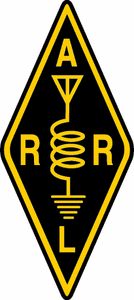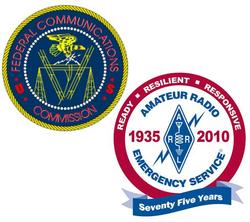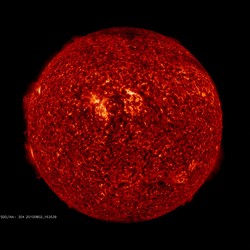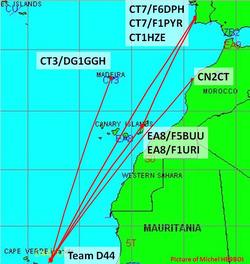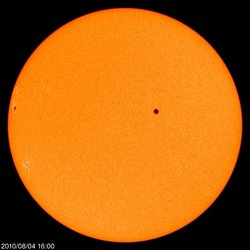 August 5, 2010 John E. Ross, KD8IDJ, Editor
| ||||||||
+ Available on ARRL Audio News + ARRL Leadership: ARRL Board Meets in Connecticut for Its 2010 Second Meeting
The ARRL Board of Directors held its Second Meeting of 2010 July 16-17 in Windsor, Connecticut, under the chairmanship of President Kay Craigie, N3KN. International Amateur Radio Union Secretary Rod Stafford, W6ROD, and Radio Amateurs of Canada President Geoff Bawden, VE4BAW, were guests of the Board. At the two-day meeting, the Board considered a number of reports and acted on several recommendations and Directors' motions. Read more here. + Public Service: FCC to Allow Government Drills Without a Waiver as of September 3
In July, the FCC released a Report and Order (R&O) that amended Part 97 -- more specifically Section 97.113 -- stating that government entities sponsoring disaster and emergency drills will no longer need to apply for a waiver to hold these drills. Additionally, employees who wish to participate in non-government-sponsored drills and exercises may do so under certain conditions. Part 97 is the portion of the Commission's rules that govern the Amateur Radio Service. In the August 4 edition of the Federal Register, the FCC issued a summary of the R&O entitled Amendment of the Commission's Rules Regarding Amateur Radio Service Communications During Government Disaster Drills --noting that the effective date of these new rules will be September 3, 2010. + It's a Bird, It's a Plane! No, It's an Asteroid -- Asteroid (31531) ARRL, To Be Exact!
John, Paul, George and Ringo are on the list. Mozart, Bach, Beethoven and Brahms -- even Frank Zappa and Elvis (but not Madonna). Of course Asimov and Sagan made the cut, Mr Spock, too, but not Captain Kirk. And now ARRL -- more precisely, (31531) ARRL -- joins this prestigious company as one of more than 16,000 named minor planets in our solar system. A minor planet -- such as an asteroid -- is an astronomical object in direct orbit around the Sun that is neither a dominant planet -- such as Mercury, Saturn and Neptune -- nor a comet. The first minor planet -- named Ceres -- was discovered in 1801. Since then, more than 200,000 minor planets have been discovered, most of them lying in the asteroid belt. But as of July 27, 2010, only 16,005 had been named. Read more here. + ARRL Facebook Page Tops 10,500 Fans
With more than 10,500 fans on Facebook, the ARRL page is the number one spot for hams on the Internet's most popular social networking site. Not only is the ARRL page the most popular Amateur Radio page on Facebook, it is attracting young -- and not-so-young -- hams to share their opinions and ham radio-related news with other hams. Read more here. + Active Sun Puts on Display for Earth
Last weekend was quite a busy time for our Sun. During the late hours of Friday, July 30, a magnificent coronal mass ejection (CME) billowed away from the eastern limb of the Sun; the source of the blast was apparently sunspot 1092. On Sunday, August 1 at approximately 0855 UTC, Earth-orbiting satellites detected a C3-class solar flare, and again, the blast came from sunspot 1092. At about the same time as the solar flare, an enormous magnetic filament erupted, stretching across the Sun's northern hemisphere, a complex global eruption involving almost the entire Earth-facing side of the Sun. "This eruption is directed right at us and is expected to get here early in the day on August 4," said Leon Golub, Senior Astrophysicist with the Solar and Stellar X-Ray Group in the High Energy Astrophysics Division of the Harvard-Smithsonian Center for Astrophysics. "It's the first major Earth-directed eruption in quite some time. We got a beautiful view of this eruption, and there might be more beautiful views to come if it triggers aurorae." Read more here. ARRL in Action: What Have We Been Up to Lately? This feature -- including convenient Web links to useful information -- is a concise monthly update of some of the things that ARRL is doing on behalf of its members. This installment covers the month of July. Read more here. + Swiss Hams Set New World Record on 10 GHz
A group of six Swiss hams have set a new record for the longest contact (based on GPS coordinates) made on 10 GHz using SSB -- 2696 km (1675 miles): from Ilha do Sal (one of the northern Cape Verde islands) to Portugal. Using a 20 W transmitter -- with a 90 cm parabolic reflector with 35 dB gain -- these hams, part of the Hyperatlantica 2010 DXpedition, were able to contact Portugal on the morning of July 10 for almost 25 minutes. The original record of 2070 km (1286 miles) -- set in 2000 by Armin Martsch, DL4AM, and Adalbert Kaufmann, DJ3KM -- was broken by the Swiss group earlier that same day, with a contact between Ilha do Sol and Tangier, Morocco at a distance of 2200 km (1367 miles). + Solar Update
Tad "There lands the Fiend, a spot like which perhaps Astronomer in the Sun's lucent Orbe through his glaz'd Optic Tube yet never saw" Cook, K7RA, reports: Both the sunspot numbers and solar flux declined this week, with the average daily sunspot numbers down more than 15 points to 20.3 and the average daily solar flux down nearly 4 points to 81.4. A new sunspot group emerged Wednesday, and two more may be coming on Thursday. Geomagnetic activity was high, due to a coronal mass ejection that sent Wednesday's planetary A index to 42; a second CME may hit earth Thursday. The predicted planetary A index for August 5-9 is 35, 15, 7, 5 and 5. Look for more information -- including a look at the three-month moving average of daily sunspot numbers that rose more than four points to 20.4, as well as the outlook for the near term -- on the ARRL Web site on Friday, August 6. For more information concerning radio propagation, visit the ARRL Technical Information Service Propagation page. This week's "Tad Cookism" is brought to you by John Milton's Paradise Lost (Book 3, lines 588-590). This Week on the Radio This week:
Next week:
All dates, unless otherwise stated, are UTC. See the ARRL Contest Branch page, the ARRL Contest Update and the WA7BNM Contest Calendar for more info. Looking for a Special Event station? Be sure to check out the ARRL Special Events Station Web page. | ||||||||
